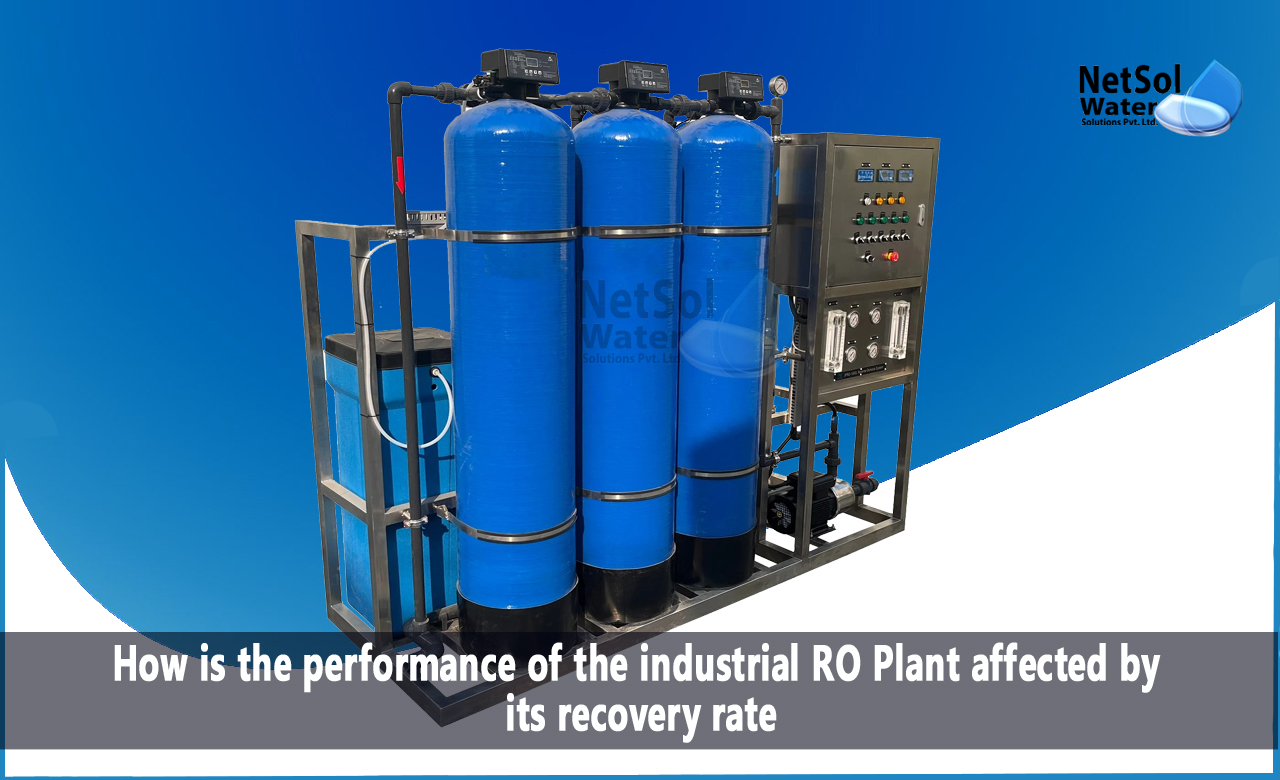The recovery rate of an industrial RO plant affects its performance
Recovery refers to the relationship between feed water flow and a permeate flow. When salt concentrations reach a level where osmotic pressure equals feed pressure, the permeate flux will decline and eventually come to a stop, as recovery increases. The salt retention will decrease as healing rises.
Hence, the recovery rate has an impact on Industrial RO Plants performance.
Let’s understand how is the performance of the industrial RO Plant affected by its recovery rate!
Although, as less concentrated water is discharged from the system the higher the recovery rate, an excessively high recovery rate will result in the following issues:
1. The produced water's desalination rate declines, resulting in poor water quality.
2. The concentration difference on both sides of the reverse osmosis membrane, will increase as the system's recovery rate rises, increasing the product water's salt content.
3. A drop in the system's net driving pressure and a subsequent fall in the water production, are both effects of the system's recovery rate increasing.
The recovery rate of brackish water desalination systems is typically regulated at 75%, meaning that the concentrated water is four times more concentrated. Sometimes 80% can be utilized when the raw water's salt level is low. To avoid fouling, the system recovery rate is lowered.
As a result, the recovery rate should be set in accordance with the requirements of the industrial reverse osmosis system, rather than being set as high as possible.
Another way in which the performance of industrial RO plant is affected by the recovery rate!
Flux rate of membrane elements
The permeate generation rate of a membrane system is dependent on the size of the membrane surface. As a result, when developing a membrane system, the membrane flux rate is taken into account.
The rate at which a particular membrane area may produce permeate, is measured in gallons per day per square foot of membrane surface. As a result, the overall output capacity of the membrane system is inversely proportional to the membrane area and, consequently, the total number of membrane parts.
To improve permeate flow, a user would be tempted to increase the membrane feed pressure, but doing so would increase the flux rate, which would make the system more prone to fouling ,and require more frequent chemical cleaning. Increasing the membrane surface area is frequently necessary to increase the Industrial RO system's recovery rate.
When will the RO recovery be adjustable?
If the water entering the unit is free of low solubility contaminants, either because they have been eliminated by pre-treatment, or because the feedwater didn't contain them to begin with, the RO recovery rate can be enhanced.
On the other hand, the recovery rate can be lowered to prevent membrane scaling/fouling, if the feedwater quality deteriorates or the pretreatment system fails.
What do we offer?
The reverse osmosis (RO) systems offered by Netsol Water are incredibly effective, in removing unwanted dissolved particles from industrial wastewater.
We are aware of how the recovery rate affects the performance of industrial RO plants, therefore, we take necessary steps to avoid the problem. With less wastewater, less energy used, higher flow rates, and contaminant rejection at competitive prices, our system is the most valuable on the market. Contact us at +91 9650608473 or send an email to enquiry@netsolwater.com for more information.



